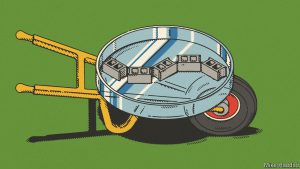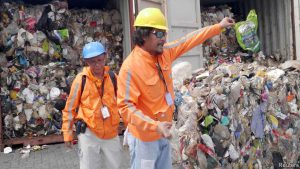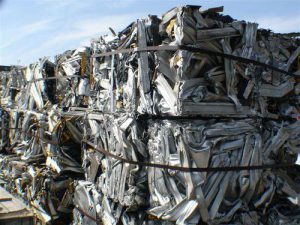SÃO PAULOAn app might win more respect for a despised but useful profession

Sep 30th 2017 | SÃO PAULO
EVERY night Gabriel Cazuza drags his two-wheeled, metal-framed carroça through the streets of São Paulo collecting aluminium, paper, cardboard and other recyclables for sale to scrap merchants. He is one of tens of thousands of catadores in Brazil’s biggest city, plying a trade that has employed poor Brazilians since the 19th century. Brazil’s last census, in 2010, counted 387,910 waste-pickers nationwide; that number may be too low. The work is back-breaking and unappreciated. “People don’t like to see us,” says Mr Cazuza.
The developers of Cataki, an app, hope to change that. Since July it has been matching people who have rubbish with catadores operating in their neighbourhoods. Catadores cart off unwanted non-recyclables like sofas and televisions as well. On the Cataki map their carroças show up Uber-style as purple icons. Thiago Mundano, a street artist who is the brain behind Cataki, insists it is more like Tinder (because it takes no cut from the catadores). On future versions, people will post photos of their rubbish, and catadores will accept or reject it by swiping right or left. Photos of catadores will make it still more Tinder-like, Mr Mundano hopes.
Under the law, municipalities are supposed to collect and sort recyclable garbage. But São Paulo’s government recycles just 300 tonnes of waste a day, while dumping 12,000 tonnes. Catadores collect four-fifths of the city’s recycled waste. Thanks to them, 98% of the country’s empty aluminium cans are recycled (catadores get 2.7 reais, or 85 cents, per kilo). Still, a lot of what could be reused goes into landfill. A report in 2010 by IPEA, a think-tank, estimated that cities bury 8bn reais-worth of recyclable rubbish a year.
Some catadores belong to co-operatives and help city governments sort through rubbish they collect. Their trade union, the National Movement of Catadores, won a contract to clean stadiums during the football World Cup held in Brazil in 2014. But for most, waste-picking is solitary and dangerous work. Cars and trucks sometimes knock them down. Police often assume they are homeless drug addicts, though only a minority live on the street. In July police in São Paulo shot dead a 39-year-old catador, Ricardo Teixeira Santos. “It is not an isolated case,” says Mr Mundano.
He started his work with waste-pickers by adorning their carroças, often with political slogans. “If politicians were recyclable, they’d be worth less than cardboard,” reads one. The message on Mr Cazuza’s cart is less testy: “Beautiful city. Without a catador, it’s garbage.” Pimp My Carroça, an “artivist” collective founded by Mr Mundano, makes carts safer as well as more festive by attaching rear-view mirrors and reflective strips. Groups inspired by it have pimped more than 800 carroças in 13 countries, including Afghanistan and Kosovo.
Waste picking is still some way short of Silicon Valley slickness. Most catadores do not own smartphones, so they arrange collections by telephone. So far, just 1,000 householders and 300 catadores have downloaded Cataki, but Mr Mundano has plans to spread it beyond Brazil, starting in other Latin American countries. The global user base could be huge, he thinks. According to a report by the World Bank, 1% of city dwellers in developing countries work as waste-pickers. Mr Cazuza, a veteran, thinks Cataki is useful mainly to “newbies who don’t know where to start”. An electronic calling card may win them more respect.
This article appeared in the The Americas section of the print edition under the headline “Swipe right to recycle”





